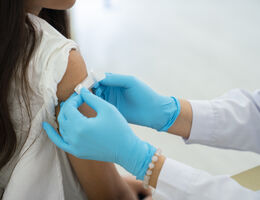

In San Bernardino County alone, there are 32 officially designated food deserts, areas where affordable, healthy food is hard to find. Of those, 27 are located in predominantly Hispanic neighborhoods, according to the county’s Department of Public Health.
“Too many families don’t just worry about what to eat,” said Gabriella Pina, DO, a pediatric hospitalist at Loma Linda University Children’s Hospital. “They worry about whether they’ll eat at all. Families are surviving off gas station snacks and fast food, not by choice, but because it’s what’s available.”
Pina views eating habits as a window into larger health issues. “Craving sugar? That’s often fatigue from poor sleep. Craving salt? Probably dehydration,” she said. “We’re not teaching kids to listen to their bodies, we’re masking the symptoms with junk food.”
Breaking these cycles, she says, requires honesty and practical steps.
“Start small,” Pina suggests. “Instead of spending $12 on soda, use that money to buy a few kinds of fruit. Kids will complain at first when soda disappears, but the body adjusts—sugar and salt cravings can reset in about two weeks.”
As a mom herself, she understands how tough it can be.
“I once tried cauliflower mac and cheese, my kid took one bite and refused to eat mac and cheese for six months.”
Her advice? Don’t rely on tricking kids into eating vegetables, introduce them gradually and repeatedly.
“Veggie powders or gummies can help, sure but the goal is to get kids eating real food. They need to learn to taste and accept it.”
Simple, hands-on strategies can make a difference:
- Let kids pack their own healthy snacks.
- Freeze homemade fruit pops with just berries and water.
- Keep sliced cucumbers or cuties in easy reach instead of chips and soda.
“They’ll complain—and that’s okay,” Pina says. “They’ll adapt. If we can change just one meal a week, that’s progress. That’s how we begin shifting the way kids see food—and themselves.”
Tools to Get Started
Pina recommends two free, family-friendly resources:
- MyFitnessPal – A free app that helps track nutrition and understand what’s really in your food.
- MyPlate.gov – A government site offering visual meal guides, tools, and games for kids.
“This isn’t about shame,” she says. “It’s about giving families the tools they need, and tuning into what our bodies and communities are telling us.”


